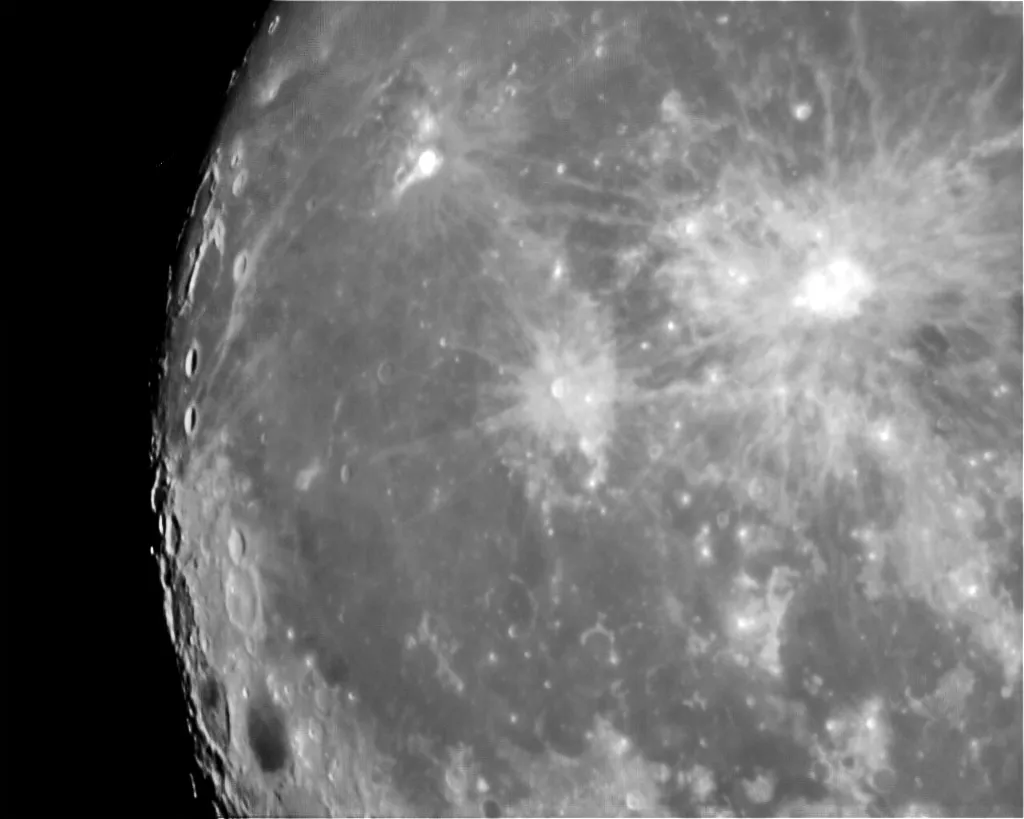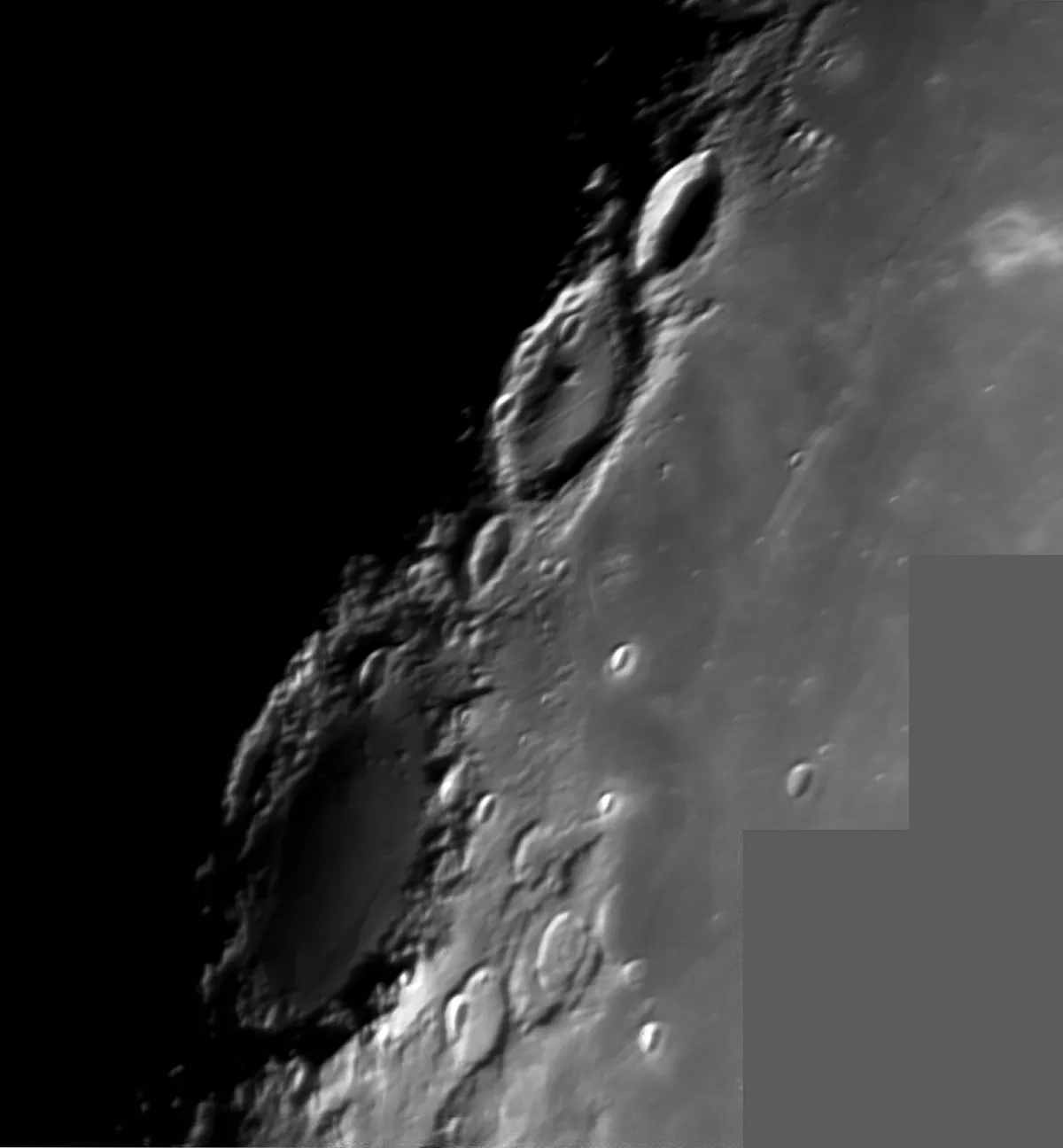One of the most easily identified Moon formations, Grimaldi lies not far from the western limb, comes into view just before full Moon phase, and is one of the last features to be lost before new Moon.
The main floor is so dark that it is unmistakable whenever it is sunlit and is generally said to be the darkest patch on the entire Moon.
It was shown on all the early Moon maps, including that of Thomas Harriot, the first telescopic lunar observer. Harriot made his first observations several months before those of Galileo and he produced a map that was decidedly better than Galileo’s.

It remained more or less unknown until 1999, when I located a copy of it and had it published in the BAA Journal, Vol. 73; it is also given in my own book Patrick Moore on the Moon.
The modern system of naming lunar features begins with Giovanni Riccioli’s map of 1651. Not surprisingly, Riccioli named two prominent features after himself and his pupil Francesco Grimaldi.
However, he was convinced the Earth was the centre of the Solar System, which explains why Galileo is only represented by a small crater.
Facts about Grimaldi Crater
- Size: 222km
- Age: 3.9 billion years
- Location: Latitude 5.2ºS, longitude 68.6ºW
- Recommended observing equipment: 4- to 6-inch telescope
Though Grimaldi is conventionally listed as a crater, it is a complex structure.
If it lay further away from the limb it might well have been called a minor mare, or at least a basin, particularly as orbiting spacecraft have located a ‘mascon’ underneath it.
A mascon – short for mass concentration – is a subsurface area of greater than average density; regular lunar maria such as the Mare Imbrium and the Mare Serenitatis have well-defined mascons.
Grimaldi is very ancient and belongs to the pre-Nectarian period, so that its age cannot be less than 3.9 billion years.
The inner wall, about 140km across, has been so damaged that it has been reduced to irregular hills, ridges and peaks, though in places there are peaks rising to at least 2km.
The basin inside this wall is the dark area, relatively featureless though with a few mounds and low ridges. Beyond the basin are the scattered remnants of an outer wall, but the area enclosed is still considerably darker than the surrounding surface.

Grimaldi is the largest member of a group of formations on the side of the great Oceanus Procellarum closest to the lunar limb. Other members are Riccioli, Hevel and Cavalerius.
Riccioli is of the same type as Grimaldi, though smaller. One area of its floor is almost as dark as any in Grimaldi, while Hevel has a convex floor and a moderately high central peak. There are rilles inside Hevel and other rille systems nearby.
Transient lunar phenomena have been observed in Grimaldi, and though not unmistakably confirmed these reports seem to be consistent and convincing.
Most of them take the form of localised obscurations. Spectroscopic observations have also noted occasional gaseous emissions, so the area is well worth monitoring.
Grimaldi is accessible for a good part of each lunar cycle, though of course libration conditions have tobetaken into account.Craters evencloser to the lunar limb, such as Schlüter and Hartwig, are so foreshortened that they are very difficult to study.



